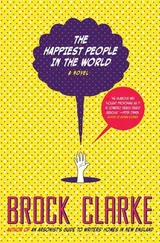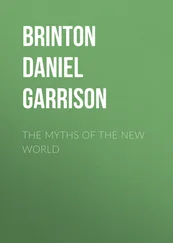Raúl and Paco set up the camera on a tripod alongside one local news crew, and the rest of the Marinaleda contingent huddled at the back by a railing. ‘We are here in the street to reclaim it for Caparros and the people of Andalusia!’ declaimed one in a succession of speakers, drawn from across the region. They seemed unlikely to do so – it was a small event, barely more than 100 people altogether, gathered on the pavement on a chilly Tuesday lunchtime. Wreaths of flowers, tied up with green and white bows, were laid at the foot of the small plaque on behalf of the workers of Malaga, Granada, Marinaleda, Guadalajara and Seville. Despite their heft, the wreaths kept tumbling over in the wind. Marinaleda was by far the smallest conurbation represented, but their wreath was still the biggest and most extravagant. Pieces of paper commemorating Caparros’s martyrdom were handed out. He looked so horribly young in the photo, so sadly ignorant of what was to follow that fractious, unstable post-Franco period, and his own senseless death. ‘Memory, dignity and struggle’, read the injunction at the end.
‘Today is not just a day of remembering,’ announced Diego Cañamero, the general secretary of SAT, who has so often been Sánchez Gordillo’s rabble-rousing partner at big protests and rallies in Andalusia. ‘It is also a day for celebrating and looking to the future of our nation.’ As he proceeded, Malaga locals pushed through the small throng, trying to go about their business: grumpy-looking old men clinging onto their flat caps, mothers with prams, awkwardly weaving through the crowd.
Because of its size, in a city of 570,000 people, the rally felt terribly niche, but it was no less passionate for that. ‘The left must struggle for the future of Andalusia, for the control of its economy in the face of the crisis,’ said Cañamero. The traffic continued to roar past behind us, and his voice rose gradually until it was almost a shout, cracking with studied passion and emotion. ‘Ninety-nine per cent of the country are fighting for democracy, land and freedom,’ he said, and called for a frente común , a common front, against the miseries of the crisis. The last time there was an anti-capitalist popular front in Spain was the 1930s, and it was usurped by Franco’s coup and the civil war.
The whole event lasted no more than forty-five minutes, and as Cañamero gave an interview to the camera, the crowd melted away into small groups again.
I mentioned to Paco the 1.5 million Catalans who had marched for independence earlier that year. ‘Andalusia is different,’ he agreed, as we walked back down the dual carriageway in search of our bus. ‘It’s not like Catalunya, we don’t have our own language, or any desire to be independent. But you know we had a Roman civilisation here, and a Moorish civilisation?’ He cited the Caliphate of Cordoba with pride. ‘Well, I think we have a unique history, and a unique spirit.’ He paused. ‘How do you say lucha in English?’ he asked. Struggle, I said, or fight – it depends on the context. ‘Well, because that is unique here, too.’ He hummed the song that had played at the end of the rally, the crowd standing to attention with fists raised in the air – it was the regional anthem, ‘Andaluces, levantaos’ (Andalusians, arise). Also known as ‘The Hymn of Andalusia’, the tune was based on a popular religious song sung in the fields during harvest time. The lyrics, a stirring testament to the Andalusian people, the ‘men of light’, and their quest for land and freedom, were written by Blas Infante, the father of Andalusian nationalism. It was premiered in July 1936, only a week before the outbreak of civil war, and Infante was executed by the fascists one month and one day after the premiere. It was not revived until after Franco died, and like the flag, the Andalusian anthem became a vital symbol of popular revanchism in the late 1970s: honouring a vociferous liberation movement that had been held back, humbled and brutalised by forty years of fascism. The song paid tribute to a people forever at odds with power, whether it was located in the hands of aristocratic landowners, the Church, the military or Franco’s regime. More than anything, the song has become a commemorative tonic for the horrors inflicted on those who had dared to strive to be both Andalusian and free.
For the protesters in Malaga that day, the visible wealth inequalities remain as entrenched now as they ever were. ‘Look at the royal family, they’re not in crisis,’ said Raúl, as we waited beside a cold, sun-bleached roundabout for the bus to take us back to Marinaleda. ‘Then look at the rest of Andalusia!’ On the pavement next to us, a young couple were huddled with their knees tucked under their chins, begging, with a sign saying they had a three-year-old they could not afford to feed. We talked about the time earlier that year when King Juan Carlos prompted a huge public outcry after going elephant hunting in Botswana – fairly normal behaviour for the Spanish royalty, but that little bit more offensive when 25 per cent of his subjects are out of work, and others are committing suicide rather than be evicted. Spain has always borne witness to these extreme inequalities – and out of that has come some of the most robust popular radicalism seen in European history.
In Andalusia, as in Spain in general, things got better after 1977 – but they did so painfully slowly, and wildly inconsistently. However, once the financial crisis hit in 2008 and sent the construction-driven boom tumbling to its shoddy foundations, most Andalusians were returned to the same struggles for existence they had been fighting for centuries. SOC-SAT’s pitch for the rally in Malaga that day was to build ‘a popular protest movement as large, determined and united’ as that of the post-Franco period, as they outlined in their flyers:
It is now thirty-five years, two statutes and several constitutional ‘upgrades’ later, and essentially, we are where we were. Andalusia remains in the rear compared to the other peninsular and island peoples. We continue to be the last in all indices of economic and social welfare. We are first only in unemployment and precariousness, poverty and deprivation.
They blamed this predicament on ‘speculative financial capital’ and the distant, undemocratic powers in Madrid and Brussels. Those gathered on the windy Malaga intersection spoke of the need to oppose la dictadura de los mercados , the dictatorship of the markets: it’s a familiar twenty-first-century conjunction – one in which, even so long after the death of Franco, dictatorship was still the preferred word for the situation they endured.
I found it momentarily odd to see this flag-waving coming from people so far to the political left. But then Andalusian nationalism is of an unusual kind – seemingly devoid of chauvinism or parochialism – and its roots lie in the insurgent anarchism of the nineteenth century.
It seems like an astonishing quirk of history, but in 1873, albeit for only two months, Francisco Pi y Margall became leader of the Spanish Federal Republic, a regime of radical decentralisation that sought to replace traditional top-down power hierarchies with horizontal pacts of understanding between free groups and people. As Madrid had promised freedom, in the Spanish countryside, villagers took advantage of the situation to divide up the latifundios among themselves and proclaim their pueblos independent sovereign micro-states. Spain briefly became the world’s first and only anarchist nation state.
Though a liberal republican and federalist in his politics, Pi y Margall was a friend of the French anarchist thinker Proudhon; among the Spanish poor, support for federalism dovetailed neatly and directly into anarchism. The German writer Helmut Rüdiger, who spent much of the 1930s in Spain, expressed it well when he wrote that
Читать дальше












